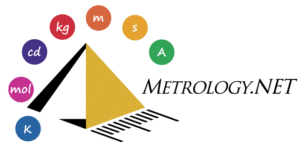 Introducing the MII Group’s Metrology Taxonomy Editor! This application was created to help the MII group (NSCLI-141 Measurement Information Infrastructure & Automation Committee) design and share the Metrology Taxonomy via XML. This app can search for Taxons based on name, type, parameters, or results. If access is granted beyond read-only users can add, edit, delete, or deprecate Taxons as needed.
Introducing the MII Group’s Metrology Taxonomy Editor! This application was created to help the MII group (NSCLI-141 Measurement Information Infrastructure & Automation Committee) design and share the Metrology Taxonomy via XML. This app can search for Taxons based on name, type, parameters, or results. If access is granted beyond read-only users can add, edit, delete, or deprecate Taxons as needed.
Once installed, the application will load a master copy of the most current Metrology Taxonomy to your computer. If you have edit capabilities, this is the file that will be updated, not the master copy. The MII group must approve any changes to the master list. From here you can make any changes to your local Taxonomy that fits your needs.
Our settings allow for the manipulation of the local copies of your Metrology Taxonomy. It can be exported to pure XML to be loaded back at a later date if you are managing multiple Taxonomies or if you want a backup of your current data. You can turn off the autosave feature to make changes to the current session in memory only. For a more readable XML export, we have created an option that saves the necessary files needed to view your XML as an HTML page. If you make a mistake, you can always reload from the master copy if needed.
We are in the progress of working on another editor that will allow calibration labs to create a digital Scope of Accreditation. The XML generated by the Metrology Taxonomy Editor will tie directly into the SoA editor defining the standard metrology Taxons. The SoA could be used for visual reference and uncertainty calculations. And Metrology.NET will be able to verify each and every Test Point’s uncertainties against the lab’s SoA based on Metrology Taxonomy.
Metrology Taxon Structure:
Naming Convention always starts with TestProcess, then the type, quantity, and a dot notated description of the quantity being measured or sourced: TestProcess.Measure.Voltage.AC.Sinewave
Parameters are a list of required and optional name value pairs that measurement needs. The TestProcess above for our system has the following parameters.
- Volts – the expected AC voltage value to be measured
- Quantity – voltage
- Required
- Frequency – the expected frequency of the AC voltage being measured
- Quantity – frequency
- Required
- UUT.Input – Input name of the UUT connecting point
- Optional
Results are the expected quantity returned once the measurement is complete.
Discipline & Sub Disciplines are optional sets of data if the Author wants to specify the measurement’s classification, for example DC/AC-LF (DC to 100 MHz).
External Reference can be used to show the Taxonomy’s ruling body’s information such as the name and URL if a website is available. You can also list any other desired information with Category Tags. These tags allow for a name-value paired list of data or a single list of data.
